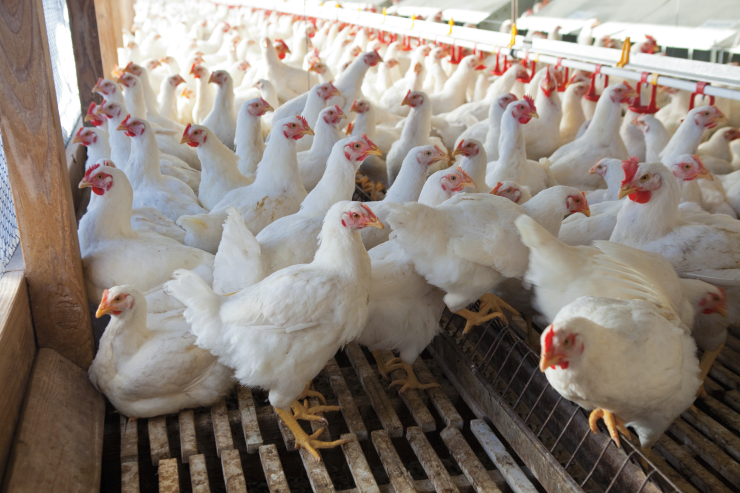Home > Arkansas > Arkansas Crops & Livestock > Broilers Top the List of Ag Commodities in Arkansas
Broilers Top the List of Ag Commodities in Arkansas

On average, 34 chickens are processed every second in Arkansas.
The 21 to 25 million chickens processed weekly across the state make poultry Arkansas’s top agriculture commodity.
“Most people say we’re No. 1 in the nation in rice production or talk about corn, but if you look at just cash receipts, you’d have to add together cotton, rice, wheat, corn and milo all to equal the cash receipts for poultry,” says Marvin Childers, president of the Poultry Federation, an organization that represents poultry companies in Arkansas, Oklahoma and Missouri.
A range of reasons has led to the state’s ability to provide the world with chicken nuggets, fingers and wings.
More than a century ago, the mountainous region of northwest Arkansas began the nation’s poultry industry. The topography didn’t work well for row crops, but chicken coops fit.
Tyson Foods was born after founder John Tyson began driving truckloads of chickens to Kansas City and Chicago. As Tyson Foods developed and evolved, it was among the first companies to introduce vertical integration, meaning Tyson owns the chickens, delivers them to farms to be raised and then picks them up for processing.
This way of organizing the business changed the state.

Worth Sparkman, public relations manager for Tyson, says the method has been important for quality control in the industry.
“If a company in any industry is to do well, it must make quality products that satisfy demand,” he says. “We contract with family farmers to raise our chicks with the feed we provide, so we know about the breed of the birds and the quality of food they eat, and this helps us eventually produce high-quality products.”
Farmer Jeff Marley strives to keep the 246,000 chickens he raises weekly for Tyson happy. That means proper lighting and temperature, which proved difficult with recent weather patterns. But a new type of chicken house has made a difference.
He installed tunnel houses that allow him to electronically monitor the exact temperature of the house and keep it ventilated at a rate that keeps his chickens the most comfortable. That leads to chickens that are less likely to become sick and more likely to put on the weight needed.
Marley and his fellow growers compete weekly to see which ranch’s chickens put on the most weight with the lowest mortality.
“If you keep everything ideal in your chicken house so they grow the most every day, then you get an actual cost per pound,” Marley says.
“Ideal” includes cooling the chickens with water misters and making sure they have the correct space and lighting for their size and age.
“For the people I know, the welfare of the chicken is a top priority,” he says. “If you don’t take care of that chicken, then that chicken won’t take care of you.”
In this way of operating, Marley and other farmers provide the buildings, electricity, poultry knowledge and more needed to raise the chickens. To save energy and help farmers with their costs, the state provides rebates for chicken farmers who switched to LED bulbs.
The technology, from lighting to temperature control, keeps evolving.
“This is one case when they will constantly make a better mousetrap,” Marley says.



